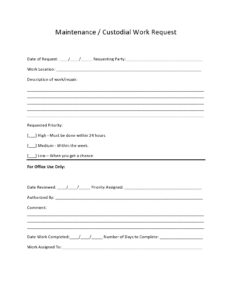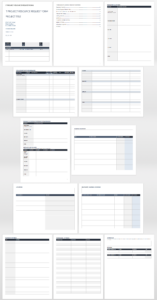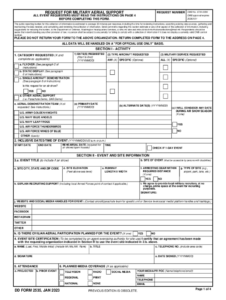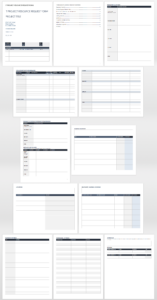Utilizing such a form offers several advantages. It streamlines communication, reduces misunderstandings, and facilitates efficient task prioritization and assignment. A clear record of requests enables better resource allocation, improves response times, and helps track the progress of maintenance activities. This documentation is also invaluable for analyzing recurring issues, identifying trends, and implementing preventive measures.
This article will explore the key components of these forms, discuss best practices for their implementation, and examine how they contribute to a proactive and well-organized maintenance strategy. Furthermore, it will delve into the different types of forms available and how to choose the most suitable one for specific organizational needs.
Key Components of a Maintenance Work Request Form
Effective maintenance management relies on clear communication and comprehensive documentation. A well-designed work request form ensures all essential information is captured, facilitating efficient processing and timely resolution of maintenance issues. The following components are crucial:
1. Request Date: The date the request was submitted is essential for tracking and prioritizing work orders.
2. Requester Information: This includes the name, department, and contact information of the individual submitting the request.
3. Location Details: Precise information about the location of the issue, including building, floor, room number, or specific asset identifier, is necessary for quick identification and response.
4. Problem Description: A clear and concise description of the problem, including observed symptoms and any relevant details, helps technicians understand the issue and arrive prepared.
5. Priority Level: Assigning a priority level (e.g., critical, high, medium, low) helps prioritize tasks based on urgency and impact on operations.
6. Assigned Technician: This field identifies the individual or team responsible for addressing the request.
7. Due Date/Target Completion Date: Establishing a timeframe for completion helps manage expectations and track progress.
8. Authorization Signature: In some cases, a designated authority may need to approve the request before work commences.
These elements ensure consistent data collection, enable efficient task management, and provide valuable insights for continuous improvement of maintenance processes. Accurate and complete information within each component contributes to effective communication, quicker response times, and better resource allocation.
How to Create a Maintenance Work Request Template
Developing a standardized maintenance work request template ensures consistency and efficiency in handling maintenance requests. A well-structured template facilitates clear communication, accurate record-keeping, and effective task management. The following steps outline the process of creating such a template.
1. Determine Required Information: Identify the essential data points needed to process a request effectively. This typically includes request date, requester information, location details, problem description, priority level, assigned technician, due date, and authorization signature.
2. Choose a Format: Select a suitable format for the template, such as a digital form, spreadsheet, or word processing document. Digital formats offer advantages in terms of automation and data management.
3. Design the Layout: Organize the template logically, grouping related fields together. Clear labels and instructions should accompany each field to ensure accurate completion.
4. Implement Input Validation: Where possible, incorporate input validation to minimize errors and ensure data consistency. This might include dropdown menus for predefined options or mandatory fields.
5. Establish a Workflow: Define the process for submitting, reviewing, approving, and assigning work requests. This includes designating responsible parties and establishing clear communication channels.
6. Test and Refine: Pilot test the template with a small group of users and gather feedback. Revise the template based on feedback to optimize its usability and effectiveness.
7. Train Staff: Provide training to all staff involved in the maintenance process on how to use the template correctly. This ensures consistent data entry and efficient workflow execution.
8. Regularly Review and Update: Periodically review the template and update it as needed to reflect changing operational requirements or best practices. This maintains its relevance and effectiveness over time.
A well-designed template, combined with a clear process, contributes to a streamlined maintenance operation. This promotes timely responses, reduces downtime, and optimizes resource allocation. Regular review and refinement further enhance efficiency and effectiveness.
Standardized forms for requesting maintenance work are crucial for efficient facility and equipment upkeep. These forms ensure clear communication, enabling effective tracking, prioritization, and resolution of maintenance issues. From detailed problem descriptions and location specifics to assigned personnel and target completion dates, these structured requests facilitate better resource allocation, minimize downtime, and support proactive maintenance strategies. Well-designed templates, combined with established workflows and regular review, contribute significantly to optimized maintenance operations.
Effective maintenance management hinges on proactive planning and efficient execution. Implementing standardized work request procedures, coupled with continuous improvement efforts, allows organizations to move beyond reactive maintenance towards a preventative approach. This shift minimizes disruptions, extends asset lifecycles, and contributes to a safer, more productive operational environment. Embracing such practices is essential for long-term operational success and cost optimization.



